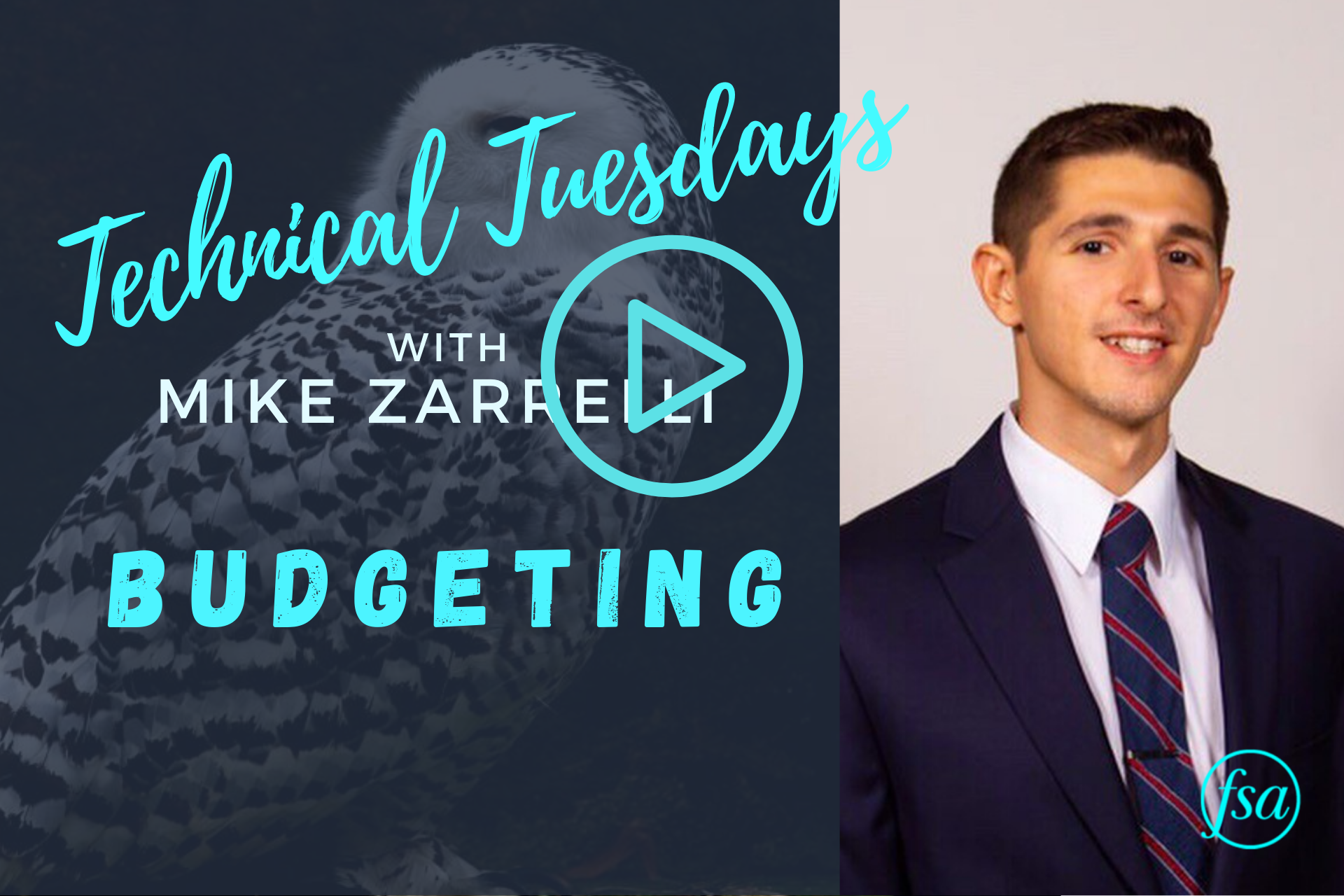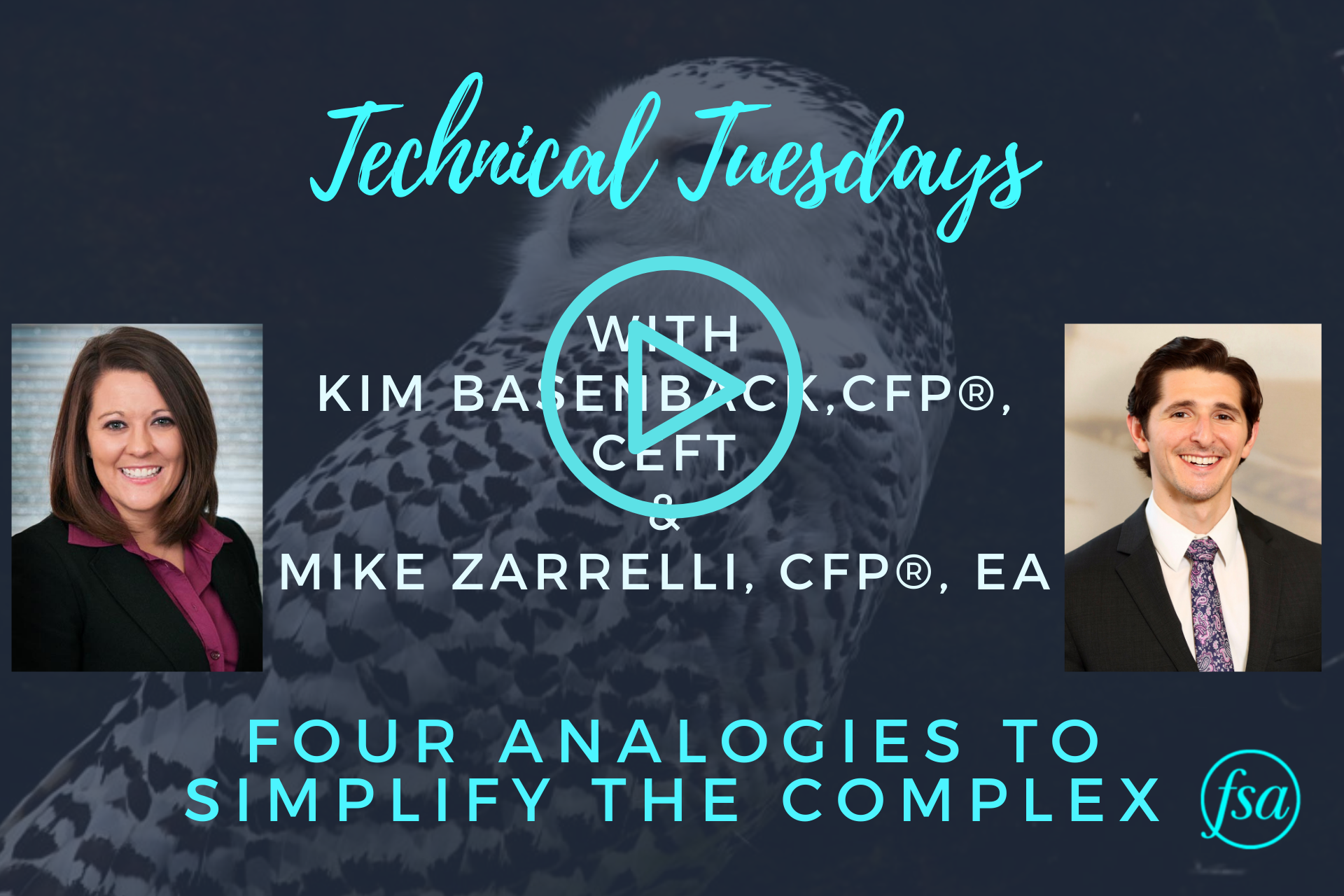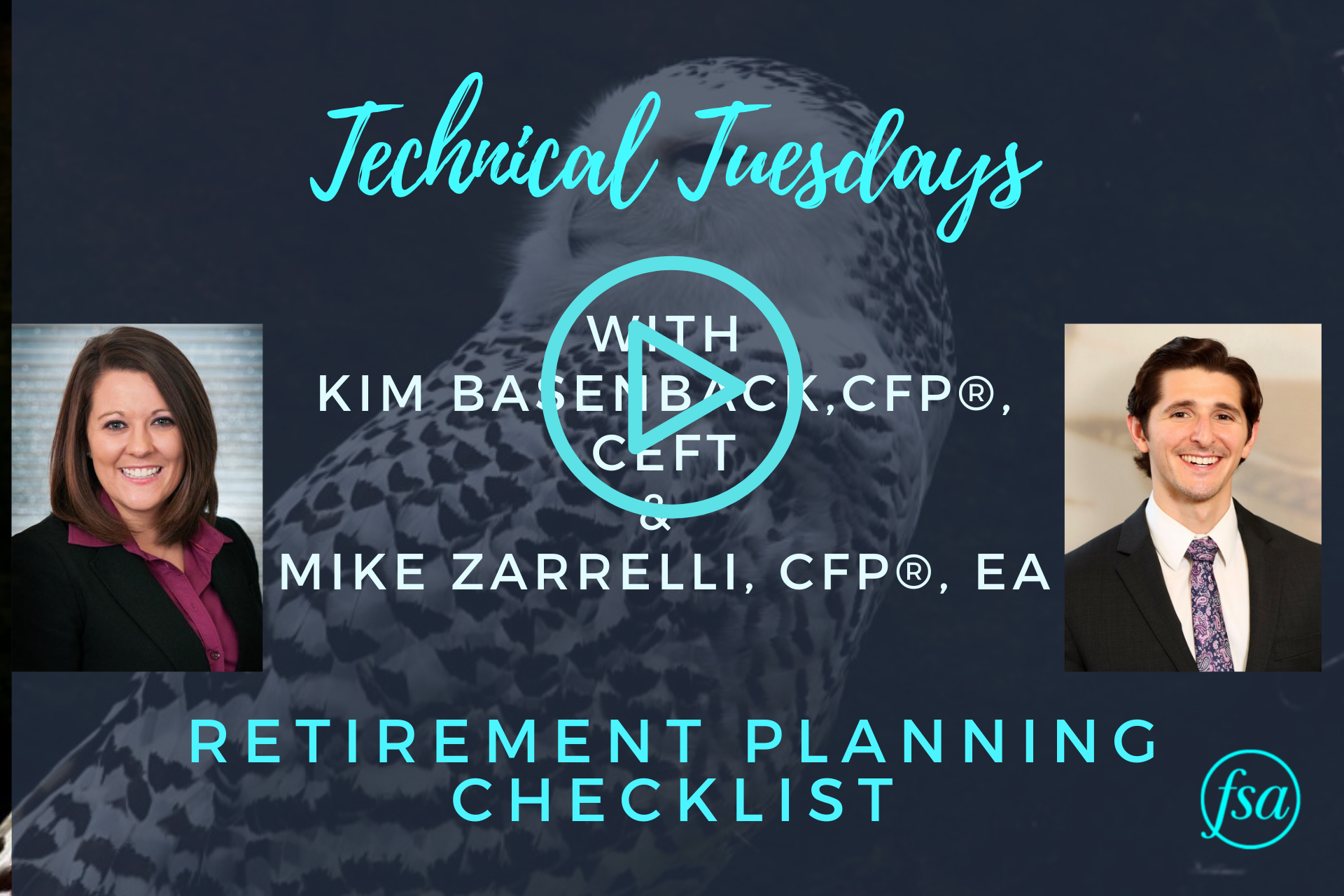In this edition of Technical Tuesdays, Mike Zarrelli talks about the importance of budgeting and shares examples of how to create a budget.
Budgeting Transcript
Thank you for joining us for Technical Tuesdays. I’m your host, Mike Zarrelli, Client Service Associate at Financial Services Advisory. Today, I’m going to be covering everyone’s favorite topic, budgeting. To begin budgeting, sometimes it’s easier to start from the top and work your way down. Usually when people think of budgeting, they think of tallying up the expense categories and adding them up all at the end. Well, often when using this method, you forget about the expenses that happen one or two times a year, such as your property taxes or your Amazon Prime membership. This leads to a budget that underestimates your actual spending.
The top-down approach takes that method and flips it upside down. Rather than adding expenses up, let’s start at the top with your pre-tax income. The first thing you’ll want to subtract out is retirement savings. People save most of their retirement money in 401(k)s, IRAs, and retirement plans. Since this is money that you can’t spend right now, we’ll want to subtract the retirement savings right off the top. Let’s take a look at an example to make it easier.
This couple makes $100,000 a year. Their goal is to save 20% to their 401ks each year. This means the couple needs to subtract $20,000 from their income right away, leaving $80,000 in pre-tax money. Next, they’ll want to subtract taxes. You can use last year’s tax return or use an online calculator to estimate. We used an online calculator to estimate for the couple. One thing to note, if you’re saving to an after-tax or a Roth retirement plan, you’ll want to subtract the taxes first and the retirement savings after.
Moving on, the couple saves $200 a month to their joint account. They’ll want to subtract this too, since the money is already accounted for. After subtracting the 401k contributions and taxes, items taken out before it hits the checking account, and our systematic $200 a month that is saved to the joint account, the couple is left over with about $5,000 a month, or $60,000 a year to spend.
The beautiful thing about this approach is that we know, as long as the couple is not using debt instruments such as credit cards or lines of credit or are draining their bank account to pay for things they can’t afford, the maximum amount they can spend each year is that $60,000. This is because they don’t have any other cash flow to spend. Now we’re at the point where the couple can discover where that $5,000 is being spent each month.
The couple will need to subtract their fixed expenses. Expenses such as the mortgage, car payments, insurance, utilities, phone, and internet can be subtracted out because these expenses occur each month. After subtracting the fixed expenses, the couple is left over with about $2,000 a month for discretionary spending on food, entertainment, travel, all of the fun stuff. The couple can take the $2,000 and start divvying it up amongst the different discretionary categories. It is good to do this in terms of monthly and yearly spending.
This is a great method to create a budget goal. To complement this, try tracking your expenses by using a spreadsheet or an online tool. After a year of tracking, compare the two. If your budget goal and your real expenses do not match up, do not fret. Over time, you can make small changes and continue to track until they become more aligned. Budgeting is not the most fun activity, but it is crucial to develop budget discipline. In fact, the goal is to actually graduate from budgeting. We don’t want you counting pennies forever. Ideally, you will become disciplined with your expenses and focus more on managing cash flow and enjoying life.
If you have any questions about budgeting, or don’t know exactly where to get started, feel free to give us a call or an email. This has been Technical Tuesdays. I’m your host, Mike Zarrelli. Thank you for watching.
FSA’s current written Disclosure Brochure and Privacy Notice discussing our current advisory services and fees is available at www.FSAinvest.com/disclosures or by calling 301-949-7300.




